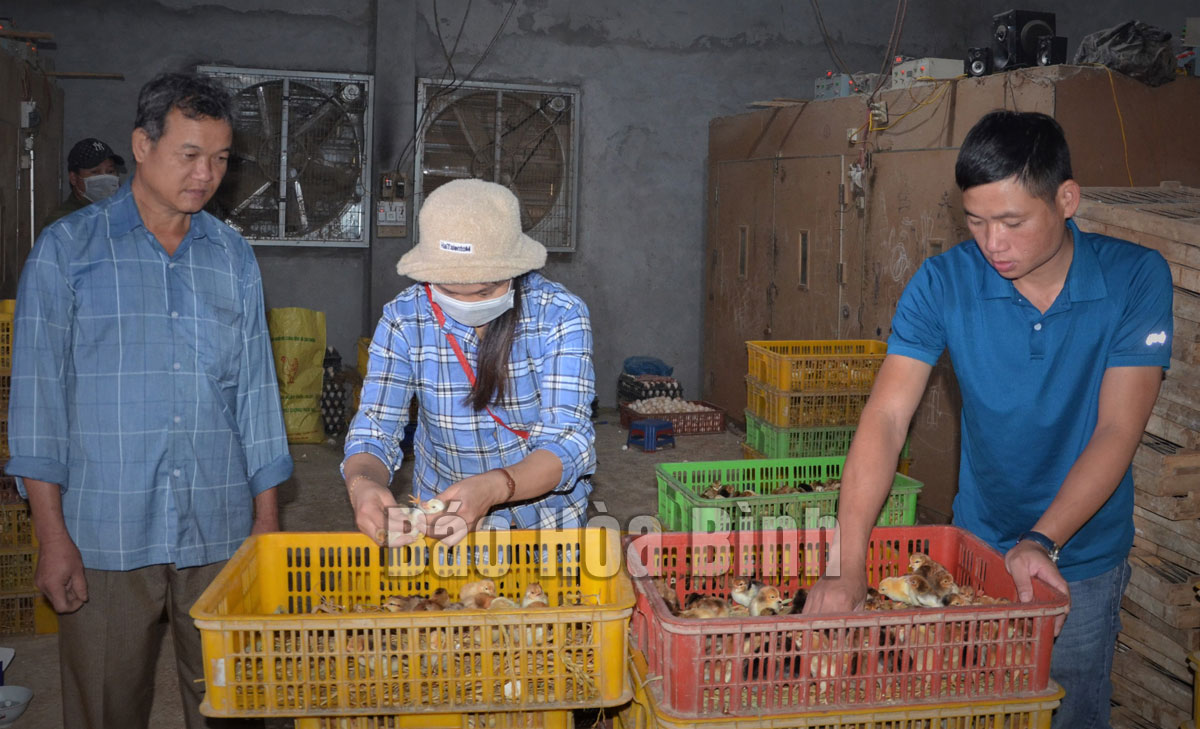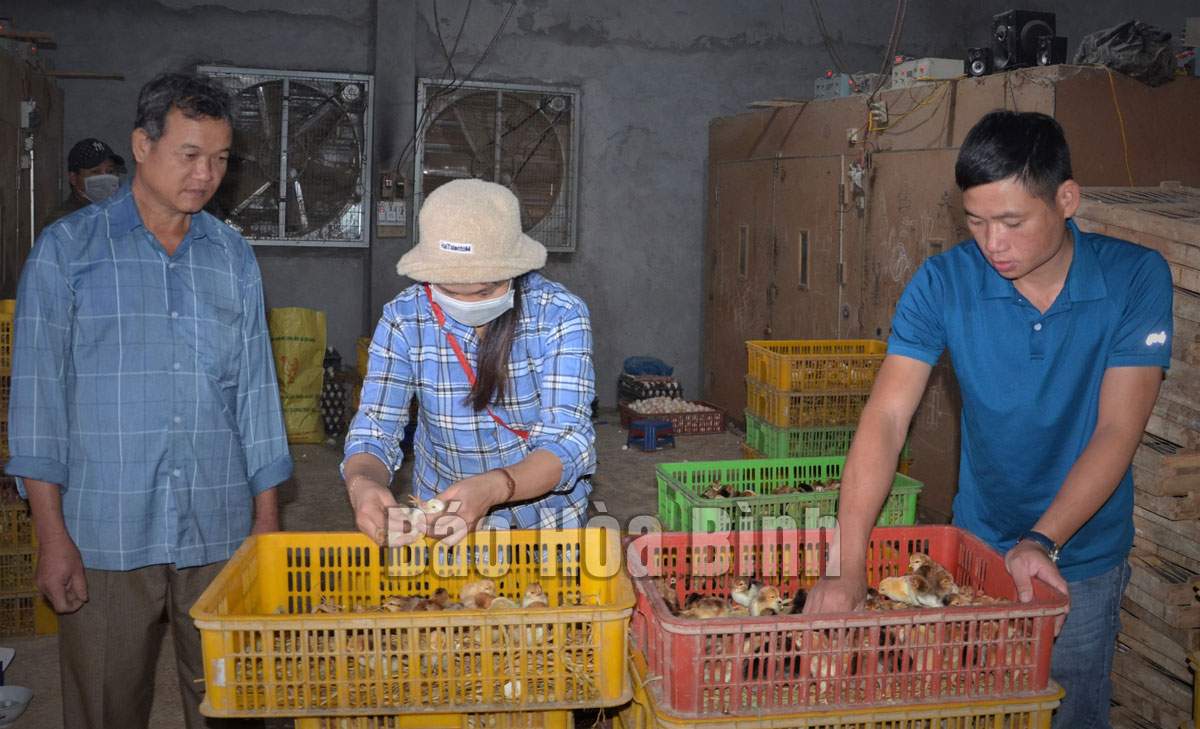
(HBO) – A disadvantaged household but thanks to an access to loans, Bui Van Hue's family in Dang 2 hamlet, Quyet Thang commune, Lac Son district started a model of hatching and breeding local chickens that brings about hundreds of millions of VND each year. In 2017, Hue encouraged several other households to form a livestock cooperative and supply chickens. Up to now, the cooperative has 10 members specialised in supplying commercial and breeding chickens to the market, contributing to increasing income and creating jobs for many local workers.

On average, Bui Van Hue's family and Chi Thien chicken breeding and supply cooperative in Lac Son district export over 30,000 local breeding chickens per month.
Hue said in 2012, he noticed that Lac Son's indigenous chicken breed, with small claws, firm and delicious meat, was highly favoured by the market. Starting from the need to maintain the purebred and to supply the market, his family invested in a hatchery to supply indigenous breeding chickens.
The biggest challenge is selecting the best brooding breeds. Lac Son district has cooperated with departments and agencies to carry out a research on preserving the gene pool of Lac Son's indigenous breeding chickens, he said.
By now, after many years of continuous trials and failures, Hue's family has perfected a closed-loop process of supplying Lac Son indigenous breeding chickens to the market. His family raises from 5,000-6,000 chickens per year, providing input materials for four hatcheries. On average, his family ships over 30,000 chickens per month, mainly to the local market and provinces such as Son La, Nghe An, and Thanh Hoa. From supplying breeding chickens and selling meat, his family earns an annual revenue of around 13 billion VND (565,000 USD) and a profit of nearly 2 billion VND.
Apart from directly selling to merchants, the cooperative sets up a distribution centre in Hanoi that specialises in providing live and ready-to-eat chickens at an average price of 130,000 VND/kg or higher. Since joining the cooperative, each household has planned a concentrated breeding area of about 1-2 ha, raising an average of 1,000-2,000 chickens per batch. Considering market demand, the cooperative expects to expand the scale of breeding and adopt VietGAP standards, ensure food safety and hygiene, and develop into a value chain for its products./.
According to data from the Hoa Binh Provincial Party Committee, the industrial production index for the first six months of 2025 is estimated to have increased by 20% compared to the same period last year. This marks the highest year-on-year growth rate for this period since 2020.
In the first six months of 2025, Hoa Binh province’s export turnover was estimated at 1.145 billion USD, marking an 18.11% increase compared to the same period in 2024. Import turnover was estimated at $ 804 million, a 17.15% increase, which helped the province maintain a positive trade balance.
The lives of the ethnic minority farmers in Tan Lac district have gradually improved thanks to the new directions in agricultural production. This is a testament to the collective strength fostered through the professional associations and groups implemented by various levels of the district’s Farmers’ Union.
With the motto the "product quality comes first,” after nearly one year of establishment and operation, Muong village’s Clean Food Agricultural and Commercial Cooperative, located in Cau Hamlet, Hung Son Commune (Kim Boi district), has launched reputable, high-quality agricultural products to the market that are well-received by consumers. The products such as Muong village’s pork sausage, salt-cured chicken, and salt-cured pork hocks have gradually carved out a place in the market and they are on the path to obtaining the OCOP certification.
In the past, the phrase "bumper harvest, rock-bottom prices" was a familiar refrain for Vietnamese farmers engaged in fragmented, small-scale agriculture. But today, a new spirit is emerging across rural areas of Hoa Binh province - one of collaboration, organisation, and collective economic models that provide a stable foundation for production.
Maintaining growing area codes and packing facility codes in accordance with regulations is a mandatory requirement for agricultural products to be eligible for export. Recently, the Department of Agriculture and Environment of Hoa Binh province has intensified technical supervision of designated farming areas and packing facilities to safeguard the "green passport" that enables its products to access international markets.



